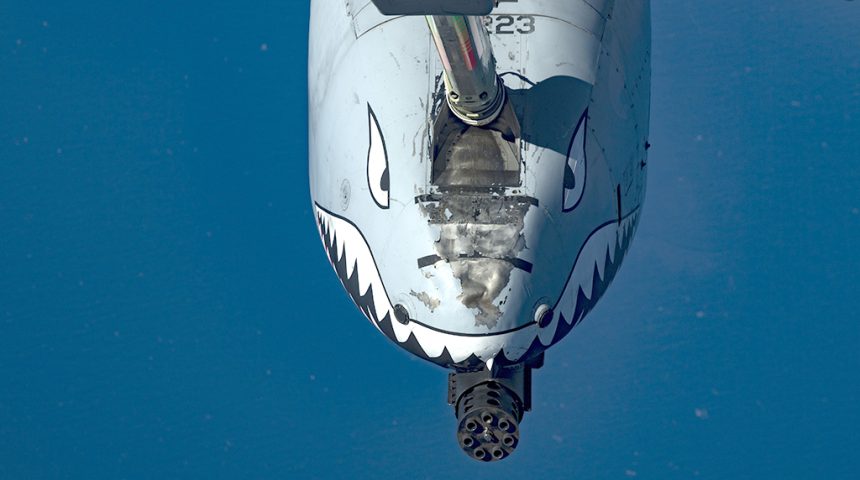Needless to say, such dents don’t affect the aircraft ability to safely fly and fight.
The photograph in this post shows an U.S. Air Force A-10 Thunderbolt II of the 23rd Fighter Group, deployed from Moody Air Force Base, Georgia, as it refuels from a U.S. Air Force KC-10 Extender assigned to the 908th Expeditionary Air Refueling Squadron, deployed to Al Dhafra Air Base, United Arab Emirates, above the U.S. Central Command area of responsibility.
The photo, taken on Jan. 17, 2020, is particularly interesting because it shows the extent of the damage caused to the nose section of the aircraft, around the receptacle where the “boomer” inserts the “flying boom” of the tanker (either a KC-10 or a KC-135). Since the Warthogs (as the attack aircraft are nicknamed in the fighter pilot community) refuel quite frequently both during normal training sorties and when deployed, most of the A-10s have their noses more or less damaged by the flying boom. In some cases, the repeated impacts have torn part of the skin creating some pretty evident holes on the upper nose area right before the canopy. However, usually, such dents and damages don’t affect the aircraft’s ability to fly and fight, hence they are left there until the next major maintenance work.
By the way, as mentioned above, the A-10 pictured above was flying in the CENTCOM AOR, where the Warthogs carry out on-call CAS (Close Air Support) and BAI (Battlefield Air Interdiction) missions in support of Operation Inherent Resolve, flying with a mix of missiles, guided bombs and rockets, that complement the A-10’s iconic GAU-8 Avenger 30-mm hydraulically driven seven-barrel Gatling-type gun.









